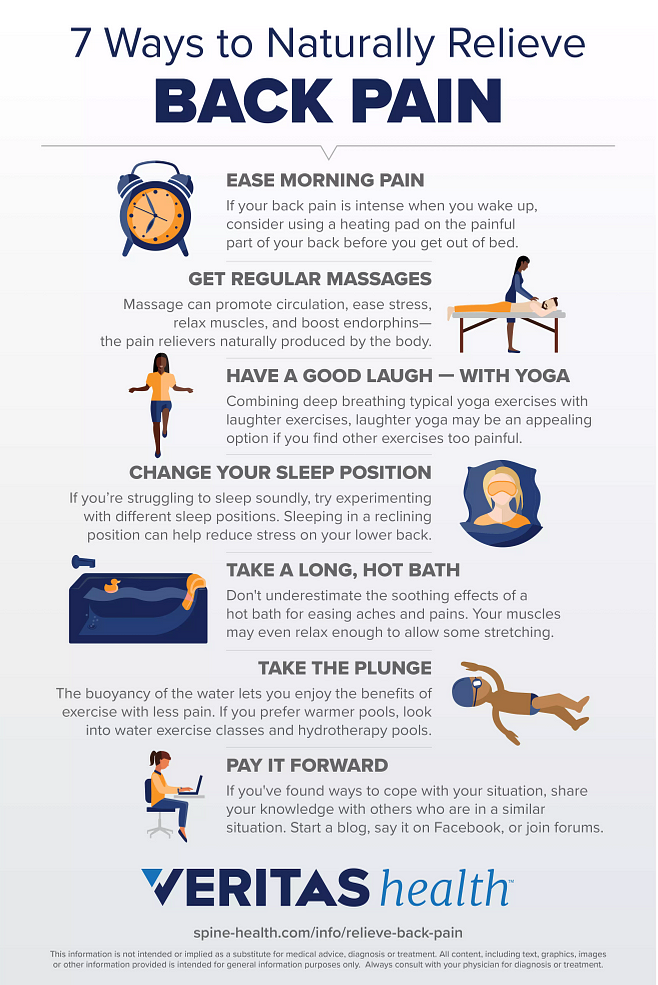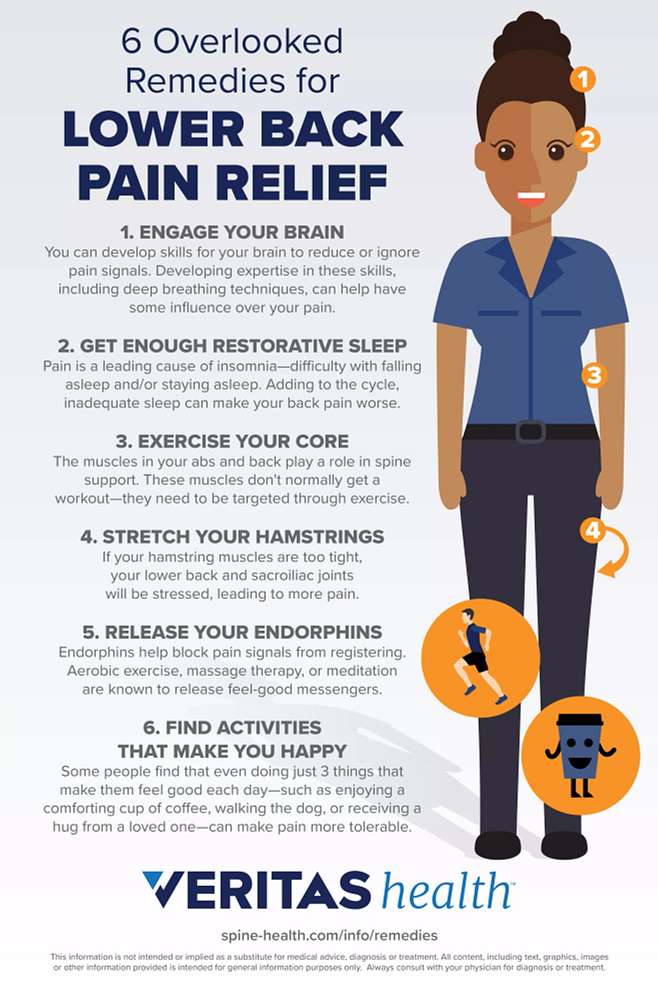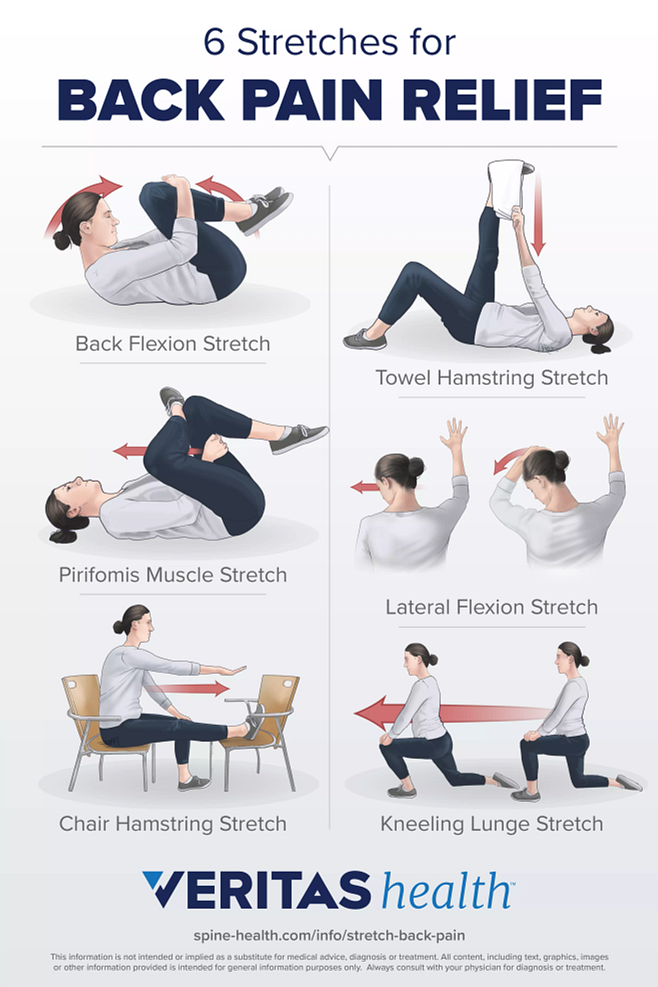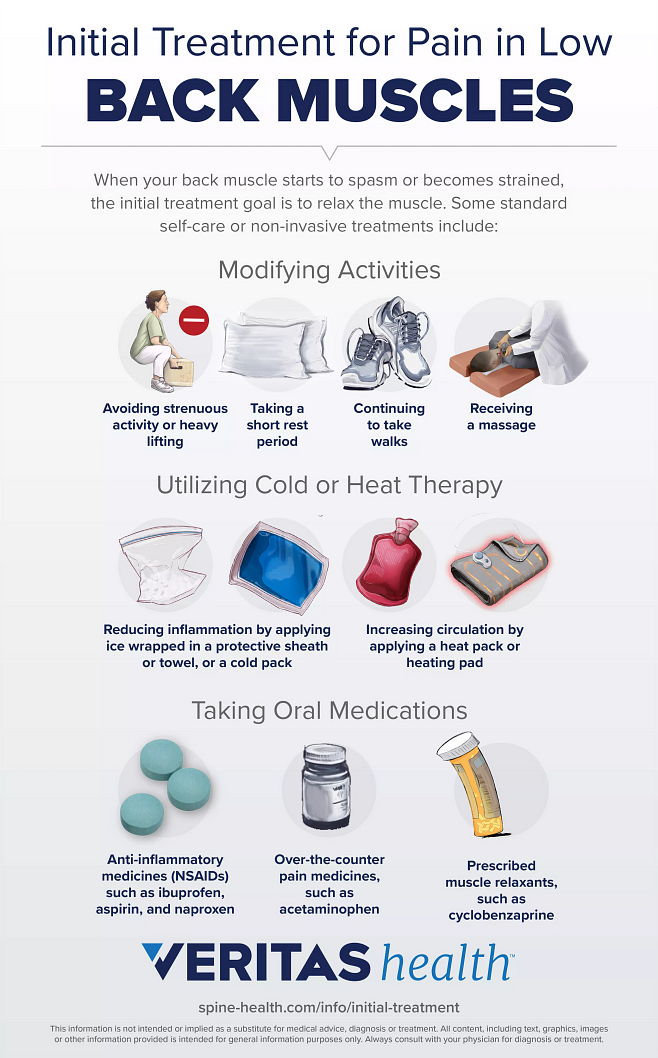Discover the surprising natural remedies and effective techniques for getting rid of lower back pain for good. Don’t miss out!
Table of Contents
- Introduction to Lower Back Pain
- What Causes Lower Back Pain?
- Understanding Related Conditions
- Simple Tips to Relieve Lower Back Pain
- Stretches and Exercises
- Proper Lifting Techniques
- Healthy Habits for a Strong Back
- When to See a Doctor
- How Grown-ups Can Help
- Summary: Remembering the Key Points
- Frequently Asked Questions (FAQs)
Introduction to Lower Back Pain
Lower back pain can be a discomfort or even a source of pain that many people, both kids and adults, experience at some point. It can make simple tasks like bending over to pick something up feel challenging and uncomfortable. Understanding what causes lower back pain and how to alleviate it can help us take better care of our bodies.
Have you ever experienced a sore back after playing sports or bending the wrong way? That sensation is what we call lower back pain. It’s like a signal from our body telling us that something might not be quite right in that area. Luckily, there are ways to ease this discomfort and make it feel better.
What Causes Lower Back Pain?
Lower back pain is a common issue that many people, including kids, may experience. Understanding why you might have lower back pain can help you find ways to prevent or relieve it. Let’s explore some of the common reasons that can cause discomfort in your lower back.
Muscles and Bones
Sometimes the muscles and bones in your back can become strained or injured, leading to pain in the lower back. This can happen from activities like playing sports or carrying heavy backpacks. It’s important to take care of your back by practicing good posture and avoiding activities that may strain your muscles.
Kidney Infections
Your kidneys are located near your lower back, and when they get infected, you may experience pain in that area. Kidney infections can cause discomfort and may require medical treatment to help you feel better. If you suspect you have a kidney infection, it’s essential to talk to a grown-up and visit a doctor for proper care.
Understanding Related Conditions
When it comes to lower back pain, there are other health issues that can be connected to it. Let’s talk about some of these conditions in simple terms.

Image courtesy of www.spine-health.com via Google Images
Tension Headaches
Have you ever had a headache that made your head feel like it was in a tight squeeze? That’s a tension headache! Sometimes, these headaches can be linked to pain in the back. So, taking care of your headaches might also help with your lower back pain.
Rheumatoid Arthritis
Imagine your joints becoming swollen and sore. That’s what happens with arthritis. Rheumatoid arthritis is when this swelling and pain affect your joints, possibly even your back. It’s essential to take care of your joints to help prevent back pain.
High Blood Pressure
High blood pressure is when the force of the blood against the walls of your arteries is too high. While it might not directly cause back pain, it’s essential to keep an eye on your blood pressure since it can affect your overall health, including your back.
Simple Tips to Relieve Lower Back Pain
When your lower back hurts, it can be really uncomfortable. But there are simple things you can do to help ease the pain. Just like how you use remedies to soothe a sore throat, there are remedies and tips that can also help soothe your lower back. Here are some easy and safe ideas to try:
Rest and Relaxation
Sometimes, all your back needs is a little rest. Lie down comfortably on a soft surface and take deep breaths. You can also try using a hot water bottle or heating pad on your back to ease the ache. Taking a break from running and jumping around can give your back the time it needs to heal.
Stay Active with Gentle Movements
While rest is important, you should also try to stay active with gentle movements. Simple stretches or taking a short walk can help loosen up your muscles and make your back feel better. Just remember to move slowly and listen to your body.
Stay Hydrated and Eat Healthy
Drinking plenty of water and eating healthy foods can also help with back pain. Water keeps your discs hydrated, which are like cushions between the bones in your spine. Eating fruits, vegetables, and foods rich in calcium can make your bones stronger and less prone to pain.
Good Posture
Remember to sit and stand up straight. Slouching can put extra pressure on your lower back, making it hurt even more. Practice good posture by imagining a string pulling you up from the top of your head while sitting or standing. This helps keep your spine in a neutral position.
By following these simple tips, you can help relieve your lower back pain and prevent it from happening in the future. Take care of your back, just like you take care of yourself when you have a sore throat!
Stretches and Exercises
When you have lower back pain, gentle stretches and exercises can help relieve discomfort and strengthen your back muscles. Remember, it’s essential to listen to your body and not do any exercise that causes pain. Here are some easy stretches and exercises that are safe for kids:

Image courtesy of www.spine-health.com via Google Images
Child’s Pose Stretch
Get down on your hands and knees, then slowly sit back on your heels while reaching your arms out in front of you. Hold this position for a few breaths to stretch your lower back gently.
Cat-Cow Stretch
Start on your hands and knees. Arch your back up like a Halloween cat, then let your belly sink down as you raise your head and tailbone. Repeat this movement slowly to stretch and warm up your back muscles.
Bridge Exercise
Lie on your back with your knees bent and feet flat on the floor. Lift your hips off the ground while squeezing your glutes and abdominal muscles. Hold this position for a few seconds before lowering back down. This exercise helps strengthen your lower back muscles.
Leg Raises
While lying on your back, lift one leg at a time straight up in the air, keeping your other leg bent. Lower your leg back down slowly and switch sides. This exercise works your lower back and core muscles.
Remember, these stretches and exercises should be done gently and without any pain. If you feel any discomfort, stop immediately and consult a grown-up. Consistent practice of these exercises can help prevent and relieve lower back pain over time.
Proper Lifting Techniques
When it comes to avoiding lower back pain, one of the most important things to learn is how to lift things properly. By using the right techniques, you can protect your back and prevent unnecessary pain.
The Right Posture
Before you even lift something, make sure your body is in the right position. Stand with your feet shoulder-width apart and keep your back straight. Bend your knees and squat down to grab the object, rather than bending over at the waist.
Distribute the Weight
If you’re lifting something heavy, try to distribute the weight evenly. Hold the object close to your body and use both hands to lift it. Avoid twisting your body while carrying the weight, as this can strain your back muscles.
Use Your Legs
Instead of relying solely on your back muscles, use the strength of your legs to lift objects. Push through your heels as you stand up, rather than putting all the strain on your back.
Remember, it’s always better to ask for help if something feels too heavy or awkward to lift on your own. Protecting your back is essential for staying pain-free and healthy.
Healthy Habits for a Strong Back
In order to prevent lower back pain and keep your back strong and healthy, there are some daily habits you can incorporate into your routine. By practicing these habits consistently, you can reduce the risk of developing back pain. Here are some tips:

Image courtesy of www.spine-health.com via Google Images
Good Posture
One of the most important habits for a strong back is maintaining good posture. This means sitting up straight, standing tall, and avoiding slouching. When you have good posture, you help your spine stay in alignment and reduce the strain on your back muscles.
Regular Exercise
Doing regular exercise that focuses on strengthening your core muscles can help support your back and prevent injuries. Activities like swimming, yoga, and walking can all contribute to a stronger back. It’s important to stay active and keep your muscles strong to support your spine.
| Treatment | Description | Advantages |
|---|---|---|
| Physical Therapy | Uses exercises and stretches to strengthen muscles and improve flexibility in the lower back. | Non-invasive, helps address underlying issues causing pain. |
| Medication | Prescribed pain relievers and anti-inflammatory drugs to manage lower back pain. | Provides immediate relief, reduces inflammation. |
| Massage Therapy | Involves manual manipulation of muscles to alleviate tension and reduce pain in the lower back. | Promotes relaxation, improves circulation. |
| Acupuncture | Traditional Chinese technique involving insertion of thin needles at strategic points to relieve pain. | Stimulates nerves, releases endorphins. |
Healthy Eating Habits
Eating a balanced diet rich in fruits, vegetables, lean proteins, and whole grains can help keep your back strong and healthy. Your body needs essential nutrients to maintain muscle strength and bone health, which are crucial for a strong back.
Adequate Sleep
Getting enough sleep is important for overall health, including the health of your back. When you’re well-rested, your body can repair and regenerate muscles, which is essential for preventing back pain. Aim for 8-10 hours of sleep each night, especially if you’re a growing kid.
By incorporating these healthy habits into your daily routine, you can keep your back strong and reduce the risk of experiencing lower back pain. Remember, prevention is key when it comes to maintaining a healthy back!
When to See a Doctor
If you are experiencing lower back pain that is not getting better with rest or seems to be getting worse, it may be a sign that you should see a doctor. Here are some signs that mean a grown-up should take you to the doctor for back pain:
1. Severe Pain
If your lower back pain is very intense and not improving with rest or over-the-counter pain medication, it might be a good idea to see a doctor.
2. Pain That Spreads
If the pain in your lower back starts spreading down your legs, especially if it causes tingling or numbness, it could be a sign of a more serious issue that needs medical attention.
3. Pain with Fever
If you have lower back pain along with a fever, it might be a sign of an infection that needs to be treated by a doctor.
4. Accidental Injury
If you hurt your back in an accident or fall, it’s important to get it checked out by a doctor to make sure there are no serious injuries that need to be addressed.
Remember, it’s always better to be safe than sorry when it comes to your health, so don’t hesitate to ask a grown-up to take you to see a doctor if you are worried about your lower back pain.
How Grown-ups Can Help
Grown-ups play an essential role in helping kids manage lower back pain and prevent future discomfort. Here are some ways parents or adults can support kids in dealing with back issues:

Image courtesy of www.spine-health.com via Google Images
Encouraging Physical Activity
One way parents can help is by encouraging kids to stay active. Whether it’s participating in sports, going for walks, or doing fun exercises together, staying active can strengthen the muscles that support the back and improve overall health.
Promoting Good Posture
Parents can remind kids to sit and stand up straight, keeping their back aligned to reduce strain on the spine. Encouraging good posture habits early on can help prevent back pain in the future.
Setting Up Ergonomic Workspaces
For kids who spend a lot of time sitting at a desk for school or play, parents can help set up an ergonomic workspace. This includes having a comfortable chair that supports the back and making sure the computer or table is at the right height to avoid slouching.
Providing Emotional Support
It’s important for parents to offer emotional support to kids experiencing back pain. Listening to their concerns, providing reassurance, and helping them cope with any anxiety about their condition can make a big difference in how they manage their pain.
By following these simple tips, grown-ups can play a crucial role in helping kids effectively manage and prevent lower back pain. Remember, a healthy back leads to a happy and active life!
Summary: Remembering the Key Points
When it comes to lower back pain, remember that it can affect both kids and adults. Understanding what causes this pain is essential in finding relief.
Muscles and Bones
Sometimes, your back hurts because your muscles and bones are tired or strained. Taking care of your body by moving and stretching can help prevent this discomfort.
Kidney Infections
If you have a kidney infection, it can also cause pain in your lower back. Make sure to drink plenty of water, eat healthy foods, and visit the doctor if you feel unwell.
Tension Headaches
Experiencing tension headaches can also be connected to your back pain. Managing stress and finding time to rest can alleviate these headaches and prevent them from affecting your back.
Rheumatoid Arthritis
Rheumatoid arthritis can cause swollen and sore joints, including in the back. Eating a balanced diet, exercising, and getting enough rest can help manage this condition and its effect on your back.
High Blood Pressure
If you have high blood pressure, it may influence your back pain. Keeping an eye on your blood pressure levels, eating well, and staying active can contribute to preventing back discomfort.
Remember, there are simple tips like soothing back pain with remedies, trying gentle stretches and exercises, and practicing proper lifting techniques to prevent further strain on your back.
Developing healthy habits such as maintaining good posture, staying active, and taking breaks from sitting can promote a strong and pain-free back.
If your back pain persists or if you experience any signs that worry you, it’s crucial to seek help from a doctor who can provide proper treatment and advice.
Lastly, for parents or adults reading this, remember that your support in helping kids manage or prevent lower back pain is essential. Paying attention to their habits, encouraging healthy choices, and offering guidance can make a big difference in their well-being.
Frequently Asked Questions (FAQs)
What are the most common causes of lower back pain?
Lower back pain can be caused by a variety of reasons, including strained muscles, poor posture, and sometimes even kidney infections. When your muscles and bones aren’t feeling their best, they can make your back hurt.
Can a sore throat remedy help with lower back pain?
Just like how sore throat remedies can soothe a scratchy throat, there are simple tips and remedies you can try to ease your lower back pain. Sometimes, gentle stretches or exercises can help make your back feel better.
When should I see a doctor for lower back pain?
If your back pain is severe, gets worse over time, or is affecting your daily activities, it’s best to have a grown-up take you to see a doctor. Remember, it’s always important to seek help when you need it.
How can adults help kids with lower back pain?
Parents and adults can support kids by encouraging healthy habits like good posture, helping them learn proper lifting techniques, and creating a safe environment to prevent back injuries. By working together, we can keep our backs strong and pain-free.




